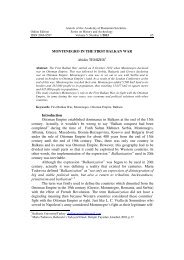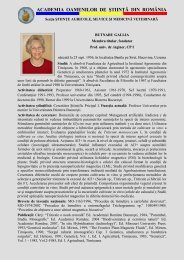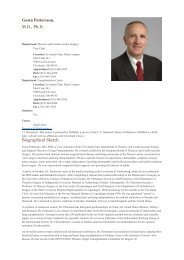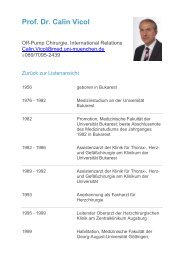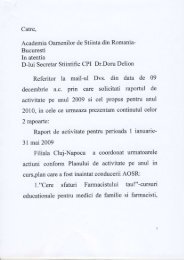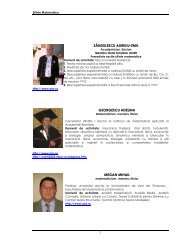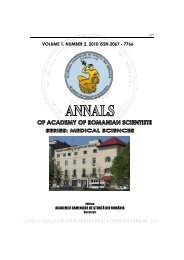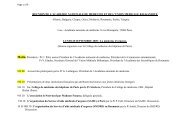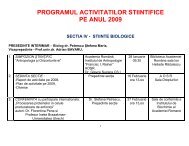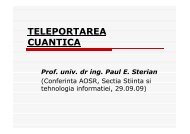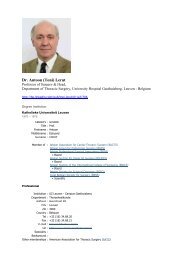Volume 3 nr 1 / 2011 - Academia Oamenilor de Stiinta din Romania
Volume 3 nr 1 / 2011 - Academia Oamenilor de Stiinta din Romania
Volume 3 nr 1 / 2011 - Academia Oamenilor de Stiinta din Romania
- No tags were found...
Create successful ePaper yourself
Turn your PDF publications into a flip-book with our unique Google optimized e-Paper software.
116 Liviu Muresan, Septimiu Caceu The network configuration and philosophy accentuate theinter<strong>de</strong>pen<strong>de</strong>nce, and equally raise the vulnerabilities of all-participatingstructures, but also the capacity and force of resistance to perturbations andthreats.Obviously, it is not possible to protect all critical infrastructures completely andalways. However, the prerequisites need to be created for their efficientmanagement: evaluation of the threats they face, the system and processvulnerabilities to risks and threats, the international cooperation and theestablishment of a system for their efficient i<strong>de</strong>ntification, monitoring, evaluationand securing.In this context, the management of security is <strong>de</strong>fined by the EuropeanCommission as a ”<strong>de</strong>liberate process which envisages the evaluation of risk andthe implementation of the actions aimed at bringing the risk at a <strong>de</strong>termined andacceptable level, at an acceptable cost”.This requires: I<strong>de</strong>ntifying the risk associated to the system and process vulnerabilities ofthe critical infrastructures, the dangers and threats these face;Analysing and evaluating the risk;Controlling the dynamics of the risk;Maintaining it within set limits.Due to the complexity of the earlier mentioned aspects, the Programme of theEuropean Commission envisages only the transnational critical infrastructures, theprotection of the national ones remaining the responsibility of the Member Statesof the EU within a common framework.In this sense, there are already numerous directives and regulations, which imposemeans and procedures for the informing on acci<strong>de</strong>nts, establishing interventionplans in cooperation with the civil protection, the administration, the emergencyservices etc. There are for example action and reaction programmes in civil andmilitary emergencies, such as nuclear, industrial, chemical, environmental, oilrelatedacci<strong>de</strong>nts, natural disasters, etc.The European Commission keeps strict evi<strong>de</strong>nce thereof, informs and reportsevery year the situation regar<strong>din</strong>g the evaluation of risks, the <strong>de</strong>velopment ofprotection techniques - that is the horizontal harmonization, coor<strong>din</strong>ation andcooperation. This communication of the European Commission, which involvesall the analyses and sectors measures, constitutes the basis of a EuropeanProgram for Critical Infrastructure Protection (EPCIP) and aims to findsolutions for their security.Copyright © Editura Aca<strong>de</strong>miei <strong>Oamenilor</strong> <strong>de</strong> Știință <strong>din</strong> România, <strong>2011</strong>Watermark Protected



